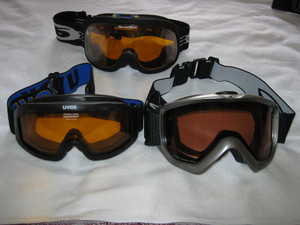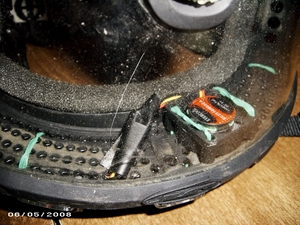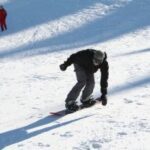As a professional snowsport instructor, I’ve tried out quite a few goggles. Nothing can ruin a day on the slopes more than when you experience goggle failure. At times you have can have fogged goggles, at worst, you experience extremely painful snow blindness. So what should you look for when buying ski goggles? With so many brands and models to choose from, picking a pair is not an easy decision. Here are some basic guidelines that should help.
What is the UV protection rating?
Go for vision protection first. Read the box and look for protection from UVA, UVB, and UVC sunrays. This will prevent a painful sunburn to the cornea and conjunctiva known as snow blindness. The coating and the goggle design will protect your eyes from the reflected sunlight from the snow. From personal experience, snow blindness is not an enjoyable condition.
What color lenses can I use with them?
Next, have the right color lens for the light conditions. Buy goggles that allow you to interchange lenses. A gold lens works for bright light conditions and is a good universal lens. If you night ski, you may want to purchase a clear lens for more light penetration. Polarized lenses cut down on glare and provide more accurate vision. A scratch resistant lens coating is a must. Lenses can easily scratch and prompt premature lens replacement.
What fog prevention features do they have?
Look for fog prevention features. Nothing can ruin a ski day more than when you are skiing blind. Look for an anti-fog coating and double lenses. Next, check the frame of the goggles for breathe-ability. The foam around the frame should allow good ventilation.
Do you wear eyeglasses?
Individuals who wear glasses face special challenges. Manufacturers make models to fit over the glasses (OTG) but they can still fog. An option I highly recommend are OTG goggles with a battery-powered fan that prevents fogging on your glasses and the goggles. Bring your glasses when shopping to ensure they are compatible with the model you are interested in. You can purchase goggles with prescription lenses but these are rather pricey.
Are they helmet compatible?
If you wear a helmet, make sure the goggles are helmet compatible. These goggles usually have a longer band, a back clasp, and fit the shape of the helmet. Some models of goggles are made to be compatible with specific helmets. This is a feature to keep in mind if you buy OTG goggles. They can require an uncomfortable “gaper gap” between the helmet and goggle to function properly if you choose an incompatible helmet. Bring your helmet along at your next purchase to check for fit.
Do they fit your face?
Once you’ve found goggles that offer the features you are looking for, try them on. They should fit snuggly around your face without any gaps or pressure points. The goggles should fit comfortably on your face while trying them out as there is no break in period. This is one advantage to purchasing goggles in person rather than online.
Buy quality goggles
Buy quality goggles. Some brands to look for are Smith Optics, Swans, Anon, Bolle, Spy, Dragon, Scott, Uvex, Von Zipper, and Oakley. If you wear OTG goggles, I highly recommend the Smith Optics Knowledge Turbo Fan OTG goggle.
There are many things to consider when purchasing goggles. Fashion should be your last consideration. These tips should help you when shopping for your next pair. Goggles are an important piece of snow-sport equipment. Make your next pair comfortable, durable, stylish, well fitting, and functional.



